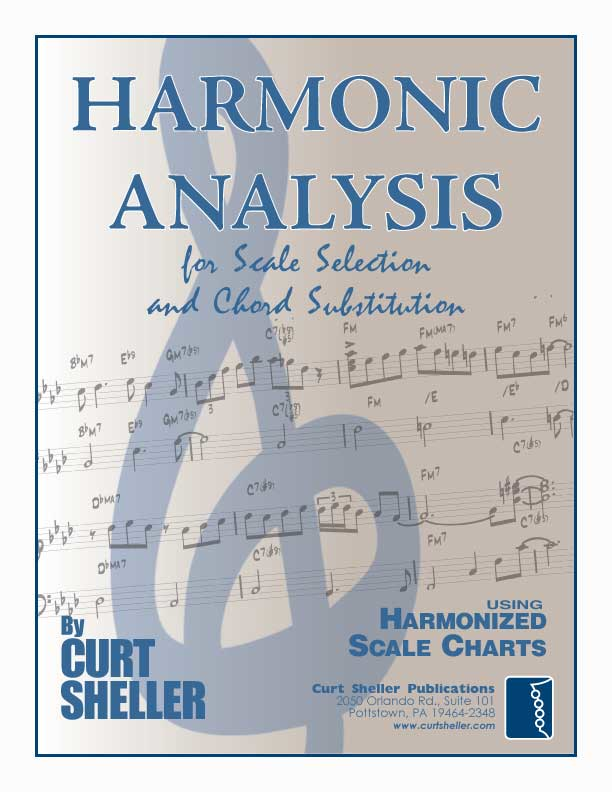Harmonic Analysis (RMA) Worksheet for the song: "Peggy Sue".
Harmonic Analysis (RMA) Worksheet for the song: Peggy Sue.
Peggy Sue
Peggy Sue is a rock and roll song written by Jerry Allison and Norman Petty (according to the official record, though Buddy Holly is known to be a principal songwriter too), and recorded and released as a single by Buddy Holly on September 20, 1957. The Crickets are not mentioned on label of the single (Coral 9-61885), but band members Joe B. Mauldin (string bass) and Jerry Allison (drums) played on the recording. This recording was also released on Holly's eponymous 1958 album.
The song was originally entitled "Cindy Lou", after Holly's niece, the daughter of his sister Pat Holley Kaiter. The title was later changed to "Peggy Sue" in reference to Peggy Sue Gerron (1940–2018[3]), the girlfriend (and future wife) of Jerry Allison, the drummer for the Crickets, after the couple had temporarily broken up. (wikiwand);
In her memoir, Whatever Happened to Peggy Sue?, Gerron stated that she first heard the song at a live performance at the Sacramento Memorial Auditorium in 1957, and that she was "so embarrassed, I could have died." (wikiwand);
Appropriately, Allison had a prominent role in the production of the song, playing paradiddles on the drums throughout the song, the drums' sound rhythmically fading in and out as a result of real-time engineering techniques by the producer, Norman Petty. Joe B. Mauldin (string bass) also played on the recording. (wikiwand);

The Daily Ukulele— 365 Songs for Better Living book.







I7
( V of IV)
For the C to C7 . The C7 is Partial Diatonic Unresolved Seventh chord. Just a bluesy harmonic touch.
For the C to C7 . The C7 is Partial Diatonic Unresolved Seventh chord. Just a bluesy harmonic touch.
Same as line 5 above. Lots of harmonic repetition in popular songs.
Same as line 6 above.
I7
( V of IV)
For the C to C7 . The C7 is Partial Diatonic Unresolved Seventh chord. Just a bluesy harmonic touch.
A Harmonic Analysis (RMA/HA) and its worksheet are intended to show the function of the chords, the harmonic principles used, the keys and tonalities the song explores. And, can be used for scale selections and chord and scale substitutions.
lead leadsheet.Minimal roadmap information such as repeats, fine, D.S., D.C., and codas has been used in preparing the worksheets to somewhat mirror the leadsheet in the Daily Ukulele book.
Yellow Book. You should start to recognize that 1st endings typically always return to a previous verse or an
 section. With a 2nd ending, a transition to a different part of the song, a
section. With a 2nd ending, a transition to a different part of the song, a  or chorus. Harmonic Principles are used for these repeats and transitions.
or chorus. Harmonic Principles are used for these repeats and transitions.- Full Diatonic
- Partial Diatonic • Full Diatonic includes Secondary Dominant chords
- Chromatic
- Unresolved

Nashvillestudios to save time and money and not have to rewrite a chart for a singer in a different key that the original chart.
Contemporary Scales: Minor Pent: Minor Pentatonic, Pent: Major Pentatonic, Blues,
Scale/Mode Names: Ion: Ionian (Major), Dor: Dorian (Minor), Phrygian: Phrygian, Lyd: Lydian, Mix: Mixolydian (Dominant), Aeol: Aeolian (Natural Minor), Loc: Locrian


Drums
A signature part of the original recording of Peggy Sue is the paradiddle figure.
Guitar/Ukulele Accompaniment
Heavy on the down strokes. a.k.a., The Rock Heavy strum, checkout the video at the lesson.

C Tuning, Low or High G
C Tuning, Low or High G
Solo
The original is in the Key of A. Here it is adapted for the Yellow book's Key of G.

C Tuning, Low or High G
C Tuning, Low or High G
Related Lessons, Videos, Lesson Series, Songs, Books & Reference Charts, Resources & Assets, Workshops are below.

Harmonic Analysis ( HA ) is the process used to determine the harmonic function of chords within a chord progression. A chord progression is defined as a sequence of chords, each chord has a root and has a particular chord type. The relationship of a chord's root to a scale determines its function within that scale's tonality. Once a chord's function is identified, scale selections along with chord and scale substitutions can be made. This process is called Root Movement Analysis ( RMA ). This series of lessons are extracted from my book for use with individual private and on-line students. Each lesson directly corresponds the chapters in my book Harmonic Analysis for Scale Selection and Chord Substitution by Curt Sheller (me).

Harmonic Analysis (HA), also known as the study of chord relationships, is the method used to identify the harmonic role of chords within a chord progression or song. A chord progression refers to a sequence of chords, with each chord having a root note and belonging to a specific chord type. The function of a chord within a particular scale's tonality is determined by its relationship to that scale.

Harmonic Analysis is the understanding of the functional sequence of chords. It is the process used to analyze the harmonic structure of a progression, song or composition. This analysis is then used to make scale selections for improvisation and chord substitution.

Strum a different song every day with easy arrangements of 365 of your favorite songs in one big songbook! The Daily Ukulele features ukulele arrangements with melody, lyrics and uke chord grids and are in ukulele-friendly keys that are particularly suited for groups of one to one hundred to play and sing.

Learn a variety of strums and rhythmic patterns in wide range of musical styles. One of the first skills a ukulele player learns is the art and craft of strumming, playing rhythm. This refers to an accompaniment technique suitable for the singer, singer - songwriter or someone who plays a support role for another instrument.

Finally, learn the names of the notes of the ukulele fingerboard in C tuning .

Learn the six fingering principles to navigating the ukulele fingerboard. Fingering is one of the most universal topics. Book: Six Secrets of the Ukulele Fingering

Harmonic Analysis is the understanding of the functional sequence of chords. It is the process used to analyze the harmonic structure of a progression, song or composition. Book: Harmonic Analysis for Scale Selection and Chord Substitution

Learn to read single note melodies in the first/open position is a lot easier than you might think. Book: Ukulele – Reading Music Series – Primer

An organized collection of daily practice and reference material for the contemporary ukulele player for developing the vocabulary and knowledge necessary for single note playing. Book: Daily Practice Material for the Contemporary Ukulele
Checkout the Books & Reference Charts for additional Handy, Dandy Reference Charts.

Ukulele Fingerboard Chart for C Tuning, Low or High G – G C E A

Ukulele Fingerboard Chart for G Tuning, Low or High A – D G B E

A handy reference chart of all 15 major and relative minor key signatures. US Letter 8.5 x 11 sized (ANSI-A), A4
Checkout the Books & Reference Charts for additional Handy, Dandy Reference Charts.







.jpg)